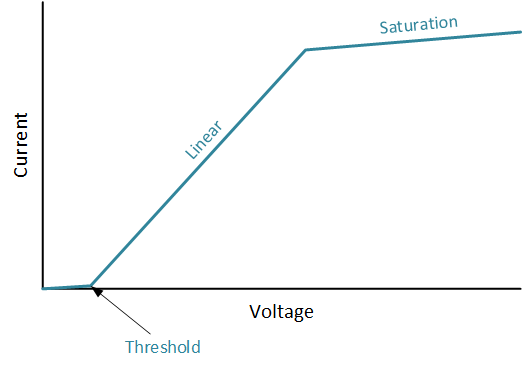
[From the last episode: We looked at the quantum phenomenon of tunnelingA phenomenon where current can flow through a very thin insulator due to quantum effects., and saw how it can allow insulatorsA material through which electricity cannot readily flow. Plastic is a good, familiar example. to conduct a little currentThe amount of electrical flow. Measured in amperes or amps (A)..]
Everything we’ve talked about so far has related to digital circuits, which are either on or off (in theory). That’s what makes CMOSA way of connecting MOS (metal-oxide-semiconductor) transistors into a switch that conducts no current when sitting idle. so useful. But not all circuits are digital. When you send a cell-phone signal or signals on your cable or Bluetooth or whatever, you’re using analog circuits to create that signal.
Let’s be honest here: while it’s not easy to create digital circuits, it’s way easier than creating analog circuits. That’s part art and part science, and analog designers are sometimes viewed as gray-bearded wizards that can work magic with their circuits.
Where Analog Circuits Operate
Let’s look at the graph below, which is super-simplified. It shows how a transistor works in the following way: if you put a certain amount of voltageVoltage is what gets electrons to flow. It's analogous to water pressure, which gets water to flow. Voltage is measured in units of "volts." on the gate, according to the horizontal axis, then you’ll get a certain amount of current as shown on the vertical axis.

Roughly speaking, there are three regions (sometimes called regimes): There’s off, there’s the linear regime, and then there’s saturation. We’ve been looking at “off” and saturation, which is all-the-way on. Yeah, it looks like a lot of current when saturated – and it would be, except that, for digital CMOS, it’s hooked to another transistor that stops the current.
But for analog circuits, we operate in the linear region. Instead of full-on and full-off, we’re partly on, and the current varies directly with the voltage. We show it as truly linear in the chart: that’s not technically accurate, but it works for our discussion.
And here’s the thing: we don’t necessarily have another transistor hooked up in the way that CMOS is to block current. So we’re likely to be using energy even when just sitting around. Designers work hard to reduce the current, but it’s not as straightforward for analog as it is for digital.
Reducing Energy Usage by Shutting Things Down…
One way we reduce energy consumption for these kinds of blocks is to shut them down when they’re not in use. For instance, if your IoTThe Internet of Things. A broad term covering many different applications where "things" are interconnected through the internet. device needs to send a message to the cloudA generic phrase referring to large numbers of computers located somewhere far away and accessed over the internet. For the IoT, computing may be local, done in the same system or building, or in the cloud, with data shipped up to the cloud and then the result shipped back down., then it will first fire up the WiFiA common type of wireless network used to connect computers and phones to each other and the internet. or Bluetooth or whatever block it wants to use, then send the message, and then shut the circuit off again. It does take some time to powerThe rate of energy consumption. For electricity, it’s measured in watts (W). analog up, and it kind of has to settle a bit before it’s good to go, but this is a very effective way to save power – especially for IoT devices that don’t have to communicate very often.
… Or Doing Tricky Designs near Threshold
There’s one other trick that a few companies have been using. We’ve seen that we have this threshold voltageThe voltage at which a transistor starts to turn on. It’s technically "off" below that voltage, although it is still ever so slightly on. for turning on the transistor, and we’ve seen that it can leak a bit below that threshold. Well, some companies are actually designing their circuits to work either near or even below that threshold. We’ll talk more about this soon.

Leave a Reply